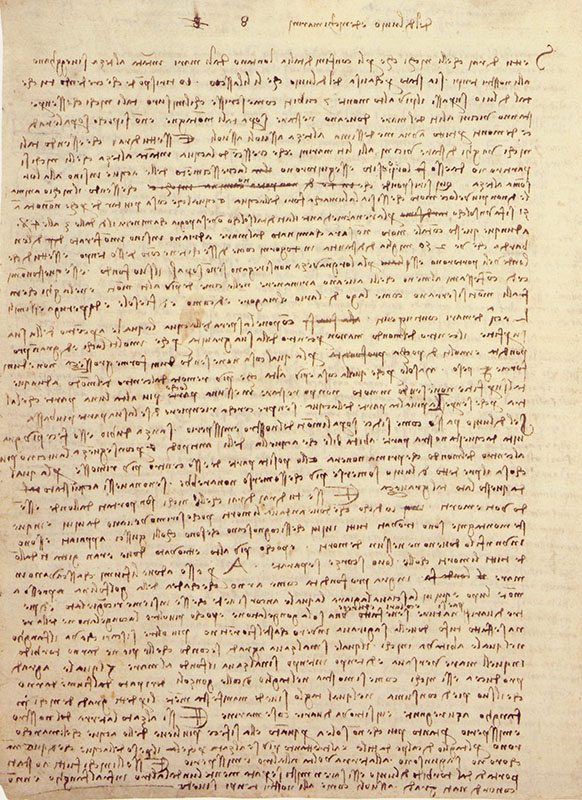
Codex Leicester, 8v. - Page without illustrations, with observations geology, palaeontology and physical geography, preceded by a title: "Concerning the Deluge and fossil seashells". The presence of fossil seashells on the high mountains of Northern Italy, far from the sea, could not be attributed to the Biblical Flood, according to Leonardo. The seashells had lived in the sea and being "no faster in motion that snails out of the water, and even a bit slower" could not have travelled the 250 miles from the Adriatic Sea to Monferrato in the 40 days of the Biblical event. Furthermore, their weight kept them on the bottom, while Leonardo had found them on the mountaintops and in the lakes amidst the mountains, such as Lake Maggiore and Lake Como (and here he also mentions the lake of Fiesole and that of Perugia). Further on, as an example of the rivers that fall to the sea from a great height, he mentions the Arno at Golfolina, near Montelupo; he also describes the agglomerations of pebble and various stones, and the tufa rock as the "congealing of sand" at Castelfiorentino. Lastly, he recalls the fossil shells found "with various other marine things" in "bluish mud'", in the gorge cut by the Arno near Collegonzi (Vinci). The orderly arrangement of the layers of fossils shows that they had not been projected this far in the vortexes of the Biblical Flood (cf. ff. 9A - 9r, 9B - 9v, 10A - 10r, 10B - 10v).
© Alessandro Vezzosi
Last update 26/feb/2008


